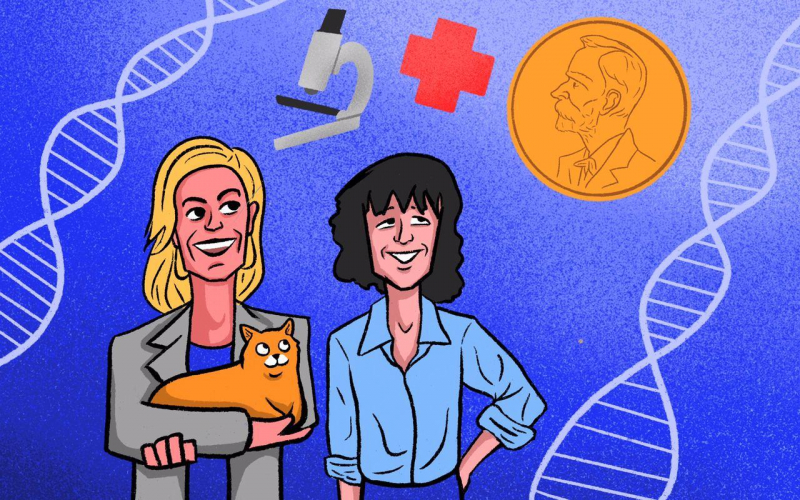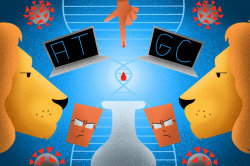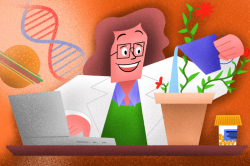По пунктам:
- Who won the 2020 Nobel Prize in Chemistry?
- What makes their research worthy of a Nobel Prize?
- How do you edit the genome?
- There are many genome editing methods; what makes CRISPR/Cas9 so special?
- This seems to have something to do with GMO and genetically modified children. Is that not something to be concerned about?
- Does this mean we’re capable of curing any genetic disorder?
- Why a Nobel Prize in Chemistry? All this seems to be closer to physiology.
Who won the 2020 Nobel Prize in Chemistry?
The 2020 Nobel Prize in Chemistry was awarded jointly to Emmanuelle Charpentier and Jennifer A. Doudna for the development of the CRISPR/Cas9 method for genome editing.
What makes their research worthy of a Nobel Prize?
People had started talking about the researchers getting a Nobel Prize almost as soon as the discovery was made. Immediately after the first articles had been published, it became apparent that the method opens up a whole new range of opportunities in biology and medicine, making genome editing a tool accessible in almost any scientific laboratory.
.
How do you edit the genome?
If it’s the CRISPR/Cas9 method that we’re talking about, you begin with choosing a target ― a DNA sequence that you want to edit. Then, researchers prepare a construct that contains the cas complex (a protein, endonuclease, that uses RNA to find a target in the DNA and disrupt the sequence) and a tag for our target, and transform the object with it. It’s possible to create complexes with tags for two or three different targets in one construct. There currently exist modifications of the method that allow researchers to simply remove parts of a DNA sequence, replace one or several “letters”, or simply include a new gene.
There are many genome editing methods; what makes CRISPR/Cas9 so special?
Yes, there are many of them, but CRISPR/Cas9 does not only boast better efficiency and precision, but is also relatively easy to use. All these traits combined with its low cost quickly made it the most popular genome editing method.
This seems to have something to do with GMO and genetically modified children. Is that not something to be concerned about?
Genetically modified organisms existed long before the invention of the CRISPR/Сas9 method, or even humanity itself, and are definitely not something to be scared of. You can say that this phenomenon is totally okay in plants. The “editing” of children in China has become one of the hottest topics in the field of genome editing. By all means, this is an example of irresponsible and unethical behavior that can bring harm to everyone involved. But this problem is about people, not the method itself. Any tool can become dangerous when placed in the wrong hands.
Does this mean we’re capable of curing any genetic disorder?
Better said, we can now edit practically any part of a genome. The current challenge is to tell what exactly needs to be edited in order to cure a specific genetic disorder. As of today, there are already cases of successful use of CRISPR/Сas9 in the treatment of some illnesses, for example, sickle cell disease and thalassemia.
Why a Nobel Prize in Chemistry? All this seems to be closer to physiology.
The precedent here was set by the 1993 Nobel Prize in Chemistry, which was awarded for the development of the PCR method that had also transformed biological and medical research for decades to come.





